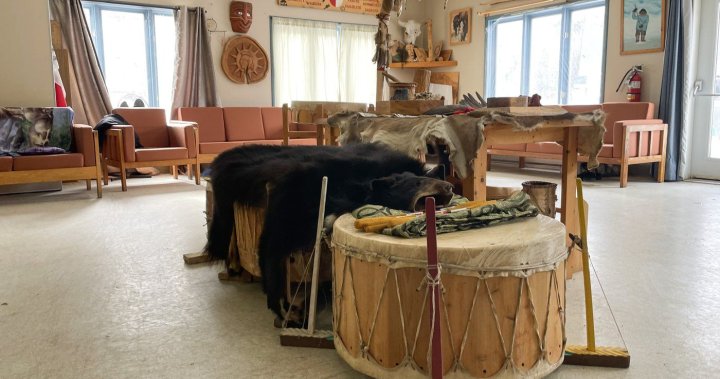Waseskun Healing Centre, located north of Montreal, is a facility for Indigenous men that focuses on healing rather than punishment. The men are called residents and they participate in activities such as smudging, sharing stories, and seeking guidance from elders. The centre aims to help residents heal from past traumas and come to terms with the crimes that led them to being in custody. The Canapé brothers, Grégoire and Michael, visit the residents monthly to guide them on their healing journeys. Waseskun is one of ten federally funded healing centres across Canada and is one of six that are run by Indigenous organizations. It has been recognized as a success story by Public Safety Canada but remains underfunded, despite being identified as a key solution to reducing Indigenous incarceration rates.
The over-incarceration of Indigenous people in Canada has been a longstanding issue, with the rates continuing to rise despite efforts to address the problem. Indigenous adults make up 32% of the incarcerated population but only 5% of the overall adult population. The situation is particularly dire for Indigenous women, who now make up half of the female population in federal prisons. The Gladue decision in 1999 highlighted the need to find alternatives to incarceration for Indigenous offenders, but little progress has been made in this area. There is a lack of Indigenous-led healing centres, with only 139 beds across six community-run lodges in Canada, while Correctional Services Canada provides an additional 250 beds.
Residents at Waseskun highlight the importance of being in a community with other Indigenous people and receiving culturally informed support. In contrast to traditional prisons, where psychological aid is limited and non-Indigenous individuals often misunderstand the experiences of Indigenous offenders, Waseskun provides a safe space for residents to engage in the healing process. Personal stories from residents like Steven and Larry emphasize the difference in environment between Waseskun and other institutions. Waseskun allows residents to wear their own clothes, fostering a sense of personal identity and self-esteem that is often lacking in federal prisons.
Data on outcomes for healing-lodge residents after their release is limited, but there is evidence to suggest that Indigenous offenders who go through these programs have a higher rate of completing required supervision for reintegration into society compared to those released from minimum-security facilities. Despite repeated calls for more healing lodges and community involvement in their management, there has been little progress in expanding these services. There are no healing lodges in the North or in Ontario and Atlantic Canada, and funding disparities between community-run lodges and those run by CSC remain a challenge. The underfunding of Indigenous-run lodges has been criticized as discriminatory, with concerns raised about the need to empower Indigenous communities to run these facilities.
The need for more and better-funded Indigenous-led healing centres is urgent, given the ongoing crisis of over-incarceration of Indigenous people in Canada. Despite the recognition of healing lodges as a viable alternative to traditional prisons, there are still significant barriers to expanding these programs. The existing healing centres, such as Waseskun, provide a model for how Indigenous-focused healing and rehabilitation can make a positive impact on the lives of offenders. However, continued advocacy and action are necessary to address the systemic issues that contribute to the disproportionate incarceration of Indigenous individuals in Canada.


